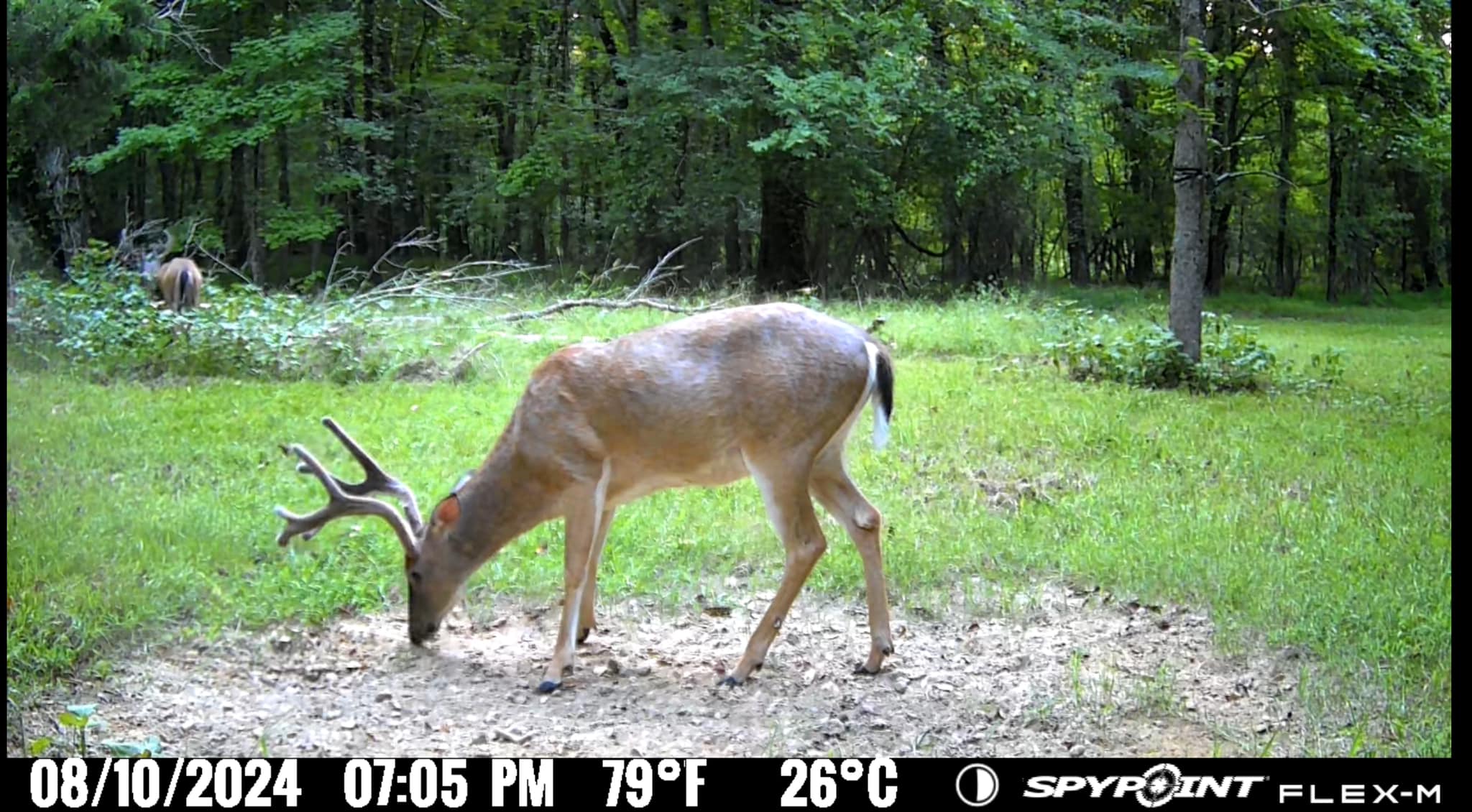
A massive-racked buck with stickers, kickers, and all manner of antler delight walks into view. It reaches the scrape, paws the ground, works the licking branch, and leaves it’s calling card for the rest of the herd to smell. It’s the pre-rut, and it’s a great time to be a deer hunter. Here are deer hunting tips for the pre-rut.
1. Know Pre-Rut Timelines
To hunt the pre-rut effectively, hunters must understand when the pre-rut occurs. Understanding when this phase takes place where you hunt is a significant part of hunting it effectively.
Fortunately, there are numerous ways to accomplish this. First, HuntStand’s Nationwide Rut Map offers detailed dates for each phase of the rut. It provides this data on a county (or parish) basis. This accurate rut (and pre-rut) timeline data is very beneficial for deer hunters. Of course, deer hunters can also contact their state or local deer biologists to receive timeframe estimates.
Armed with the knowledge of typical rut timelines, deer hunters can use tactics that are attuned to that phase. For example, calling and decoying can prove more effective during this window.
2. Recognize Pre-Rut Behavior
Deer hunters should learn to recognize pre-rut deer behavior. This is a time when bucks begin ramping up aggressiveness toward other deer. It’s not uncommon to witness fights during this phase, too.
Seeing a deer react aggressively might signal to you an opportunity to use calling or rattling. These deer are more likely to respond and commit to your calling, creating a higher-odds opportunity.
3. Shift Trail Cams Accordingly
Trail camera locations should vary by phase of the season. As the pre-rut begins, it’s time to shift cams to new spots. Great areas to focus on include field-edge scrapes, perennial scrapes, acorn-laden white oak trees (earlier in the phase), acorn-laden red oak trees (later in the phase), staging areas adjacent to thick bedding areas, and more.

4. Find the Hot Sign
Deer hunting is largely about finding fresh sign. That’s especially true during the pre-rut, which is a time when bucks are making rubs and scrapes in force. As these begin dotting the landscape, look for fresh sign, which might indicate where deer are spending their time. It might even help pinpoint treestand locations that offer higher odds of success.
5. Stick to Bed-to-Feed Patterns
While the rut is far more random, the pre-rut isn’t. Deer are still very much on bed-to-feed patterns. Therefore, hunters should focus on these. Don’t deploy rut-hunting tactics just yet.
Instead, find the hottest food sources that deer are hitting. Then, find where they are most likely bedding. Connect the dots between the two, and identify likely trails that serve as travel routes. Also, find water sources along these routes, and other spots deer might stage up.
The connected dots are the lines of movement. Find stand locations along these paths that you are most likely to intercept deer movement. Furthermore, focus on spots that you can access without spooking deer. Then, hunt accordingly.
6. Give Them the Wind (Just-Off Wind Directions)
While it seems counterintuitive, giving deer the wind is a good play. Oftentimes, mature bucks won’t move very far during daylight unless the wind is in their favor. Therefore, setting up in a manner that a buck thinks the wind is in its favor, but it’s just off enough that they don’t enter your scent cone, can be lethal.
To make this work, it requires threading the needle. Perhaps your stand location is along a ridge edge, fencerow, field edge, or other area that might keep deer from circling completely downwind. Again, the wind is largely in the deer’s favor, but it’s just off enough that deer don’t smell you.
Try this tactic, and you’re likely to start seeing more deer (especially mature bucks) during daylight hours.
7. Hunt Interior Scrapes
“Exterior” scrapes that are further from bedding cover are ideal for taking inventory. These field-edge scrapes are great trail camera locations, but not stand locations. Oftentimes, deer hit these spots after dark to before daylight.
From a hunting perspective, it’s better to focus on “interior” scrapes, which are closer to bedding areas. These are located within cover. Many of these are in staging areas, or the fringes of bedding areas, making these excellent locations to intercept bucks during daylight.
8. Stake a Decoy
As the pre-rut ramps up, so do bucks’ testosterone levels. This creates tense situations where bucks encounter other bucks. Furthermore, the early season and pre-rut is a time when bucks that know each other finish sorting the pecking order.
Done correctly, and without scent-related blunders, decoying is an effective tactic for tagging pre-rut bucks. If a dominant deer sees a buck decoy, it just might commit and walk right into bow range. So, staking a decoy can provoke a big, mature whitetail to come in.
9. Work With the Weather
Weather is a big motivator for deer movement. Because of this, deer hunters should pay attention to the weather forecast. Keep an eye out for sudden weather events and temperature drops.
For example, a weather front that pushes through can spur deer to move. Expect a good deal of action before the front arrives, and after it pushes through. Furthermore, anticipate temperature drops impacting deer, too. Deer oftentimes move earlier in the afternoon on days that are unseasonably cool. This creates an ideal opportunity to intercept big deer on their feet during legal shooting hours.
10. Make a Big Move
As the pre-rut peaks, and even wanes, the rut creeps into the minds of bucks everywhere. They begin moving more and more during daylight each day. This creates great opportunities for hunters to capitalize on movement.
Furthermore, don’t be afraid to make a big, calculative move. If a deer is nearing daylighting, and you haven’t had a chance to hunt it yet, maybe now is the time. Or, if a deer is super aggressive, and you want to decoy that deer, give it a shot. Maybe a target buck just moved into its fall core area, and you want to kill that deer before the rut arrives and it follows no pattern at all.
Whatever the case, don’t be afraid to make a big move. Whatever it is, just make sure it makes sense.
Fill That Tag
The pre-rut is an excellent time to fill buck tags. But to do so, and to do so efficiently and effectively, requires the implementation of deer hunting tips for the pre-rut. Remember that, and a big deer just might be in your future this fall.



